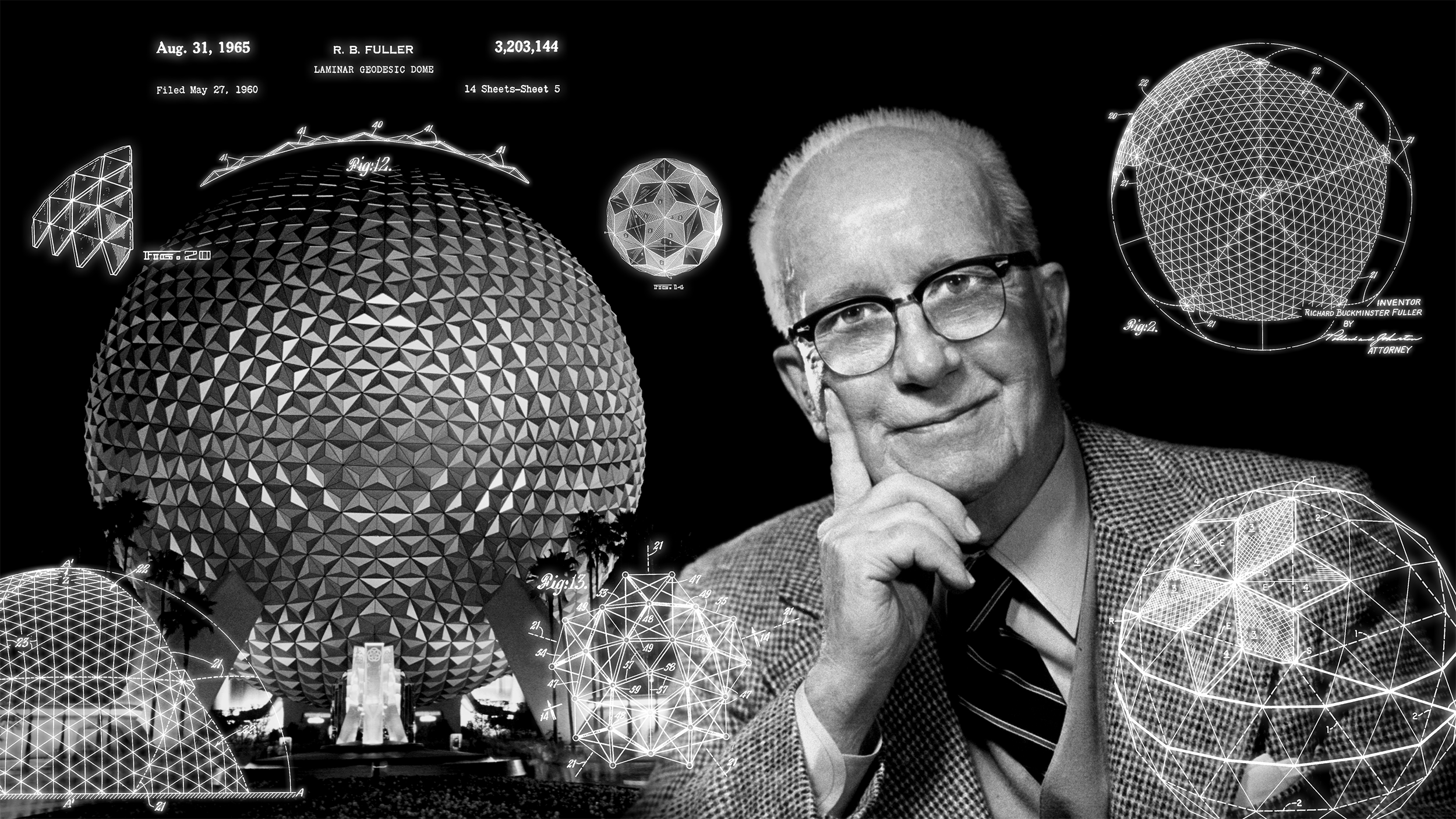Buckminster Fuller is Born
Jules Verne once said “Anything one man can imagine, other men can make real.”, Richard Buckminster Fuller was able to do both!
One of the most important visionaries of the 20th Century, Buckminster (“Bucky”) was among (if not THE) first futurists to teach the factually-based concept of Super Abundance more than a century before contemporary futurists like Marian Tupy began writing about an optimistic future for humanity.
But Bucky’s life didn’t begin that way.
Suffering from severe depression for five years after the death of his daughter and losing his job, he contemplated suicide by drowning in Lake Michigan, so that his family could benefit from a life insurance payment. Just before killing himself and inner voice spoke to him declaring:
You do not have the right to eliminate yourself. … You belong to the Universe. Your significance will remain forever obscure to you, but you may assume that you are fulfilling your role if you apply yourself to converting your experiences to the highest advantage of others.
From that moment on, he ultimately chose to embark on "an experiment, to find what a single individual could contribute to changing the world and benefiting all humanity".
Among his many patients was perfecting and proliferating the concept of geodesic structures. The largest of these was the United States Pavilion for Canada’s Expo ‘67 which is 249 ft in diameter and 203 feet high that contained several exhibits including NASA spacecraft for the (then) ongoing Apollo program and a gallery of Hollywood memorabilia under the theme of “Man and his World”.
The Montreal Biosphère as it appearing during Expo ‘67
But beyond his architectural achievements, Buckminster had a somewhat rare philosophy he termed “Ephemeralization” a factually-based observation that human progress trends towards “doing less with more.” Despite the mountains of evidence to support his views, is still hampered by malicious Malthusian fallacies popularized by pessimists such as the continuously disproven Paul R. Ehrlich.
Perhaps Fuller’s most important contribution to the world was his concept of “Spaceship Earth” (1968) which simply stated views us both passengers and crew of this planet which we must take an active role in its preservation and pilot it toward a productive future for all mankind.
Marty Sklar, John DeCuir Sr, and John Hench with the 1977 “Golden Dome” iteration of Spaceship Earth.
This optimistic vision of the future naturally appealed to those working for Walt Disney Productions during the metamorphosis of Epcot from the City to the Center. Even the theme of the United States pavilion’s “Man and his World” directly influenced Ray Bradbury in his first draft script for Epcot’s centerpiece attraction with the title “Man and his Spaceship”. As did Bucky’s designs for the Canadian Expo ‘67 as John Hench described:
Similarly, Spaceship Earth, the geosphere that is the symbol of Epcot, offered an impressive invitation to adventure and equally impressive design challenges. We assumed from the beginning that we needed a large sphere for the Epcot icon, and we wanted one with enough space inside for an attraction. We were familiar with architect Buckminster Fuller's experiments with building the geodesic dome…Fuller's famous phrase "spaceship earth" also appealed to us. Fuller had built his ingenious domes from prefabricated triangular units, a system we hoped to use, too; but he had never made a complete sphere as large as the one we hoped to build. Our engineers said that if we constructed only three-quarters of the sphere, our dome could support itself on a base, leaving the interior space clear. The famous dome at Expo '67 in Montreal had been designed this way. At our first design meeting, the engineers showed a drawing that pictured a dome sitting directly on the ground. We needed a sphere, however; I asked if the dome could instead rest on a round platform with legs underneath to hold it up, which would allow us to suspend the bottom quarter of a sphere from the underside of the platform, completing the sphere. After several days, the engineers concluded that yes, my idea could work, but that it would be expensive. The geosphere we built was 164 feet in diameter, standing eighteen feet off the ground on three sets of double legs, with more than two million cubic feet of interior space. It has so far withstood winds of up to 200 miles an hour. It wasn't complicated at all, really. I was simply able to visualize how the self-supporting dome could be built as a perfect sphere seeming to float on its legs.
Although there are certainly larger geodesic domes in the world, EPCOT Center’s Spaceship Earth is, by far, the most impressive application of Fuller’s design for multiple reasons paramount among these is that over 40 years later it is STILL the world’s ONLY complete Geosphere. And most impressively, it also contains an entire attraction!
Although the entire structure is truly Grand this photo shows how Miraculous Spaceship Earth is. The massive geosphere featuring a ride thru 1,000's of years of history seemingly hovers (!) 15 feet above the surface of the planet it pays tribute to. Photo by Jason Grandt













